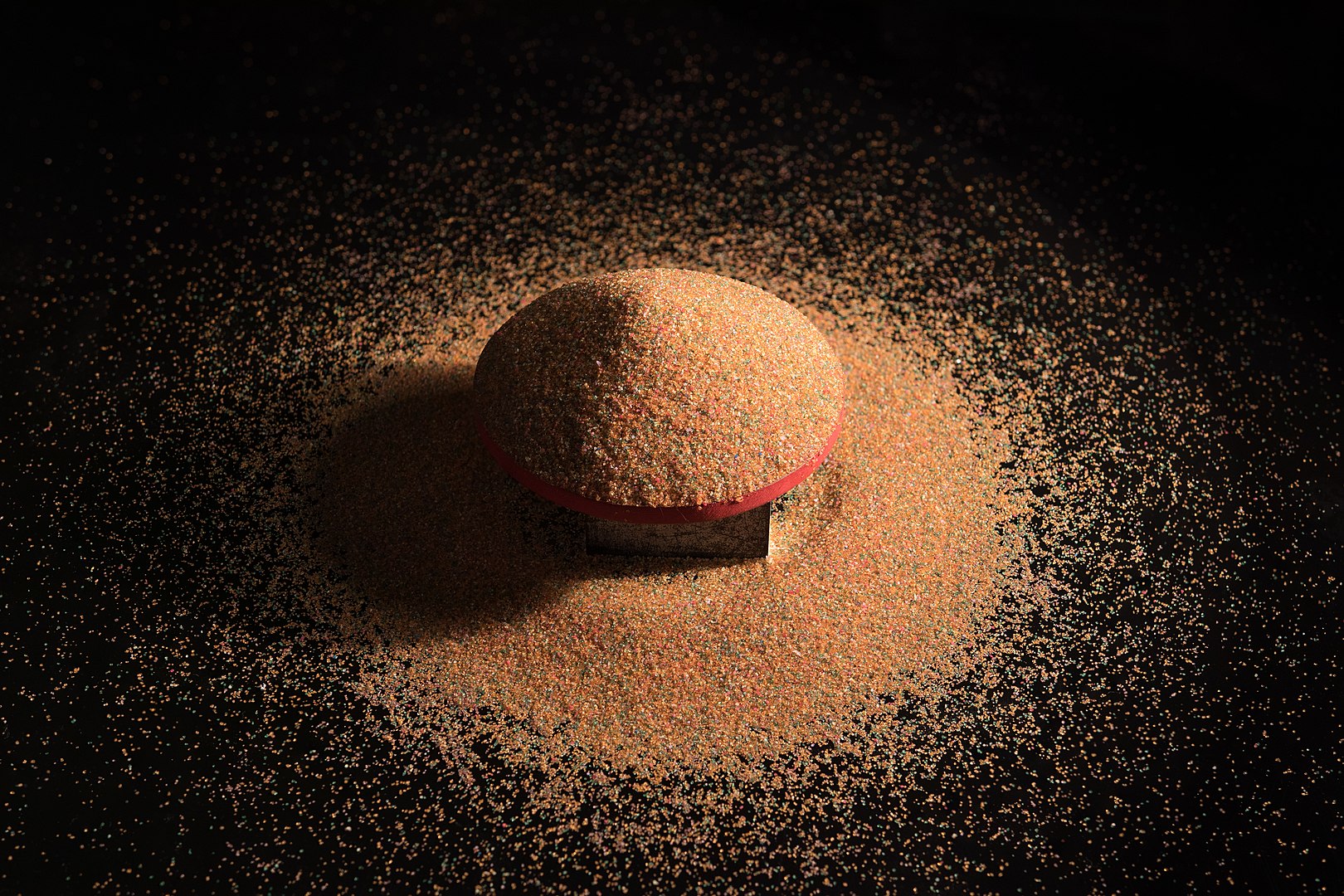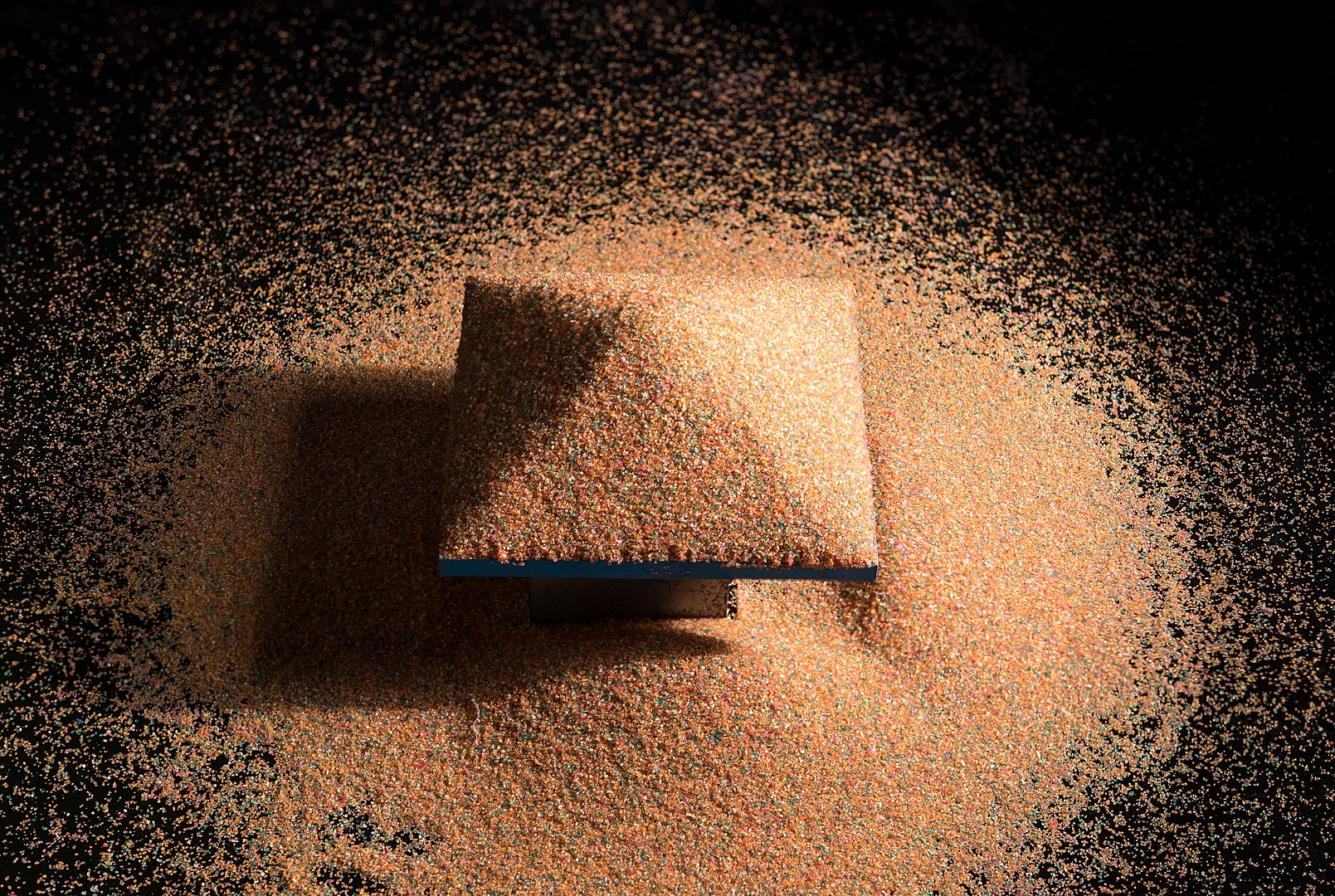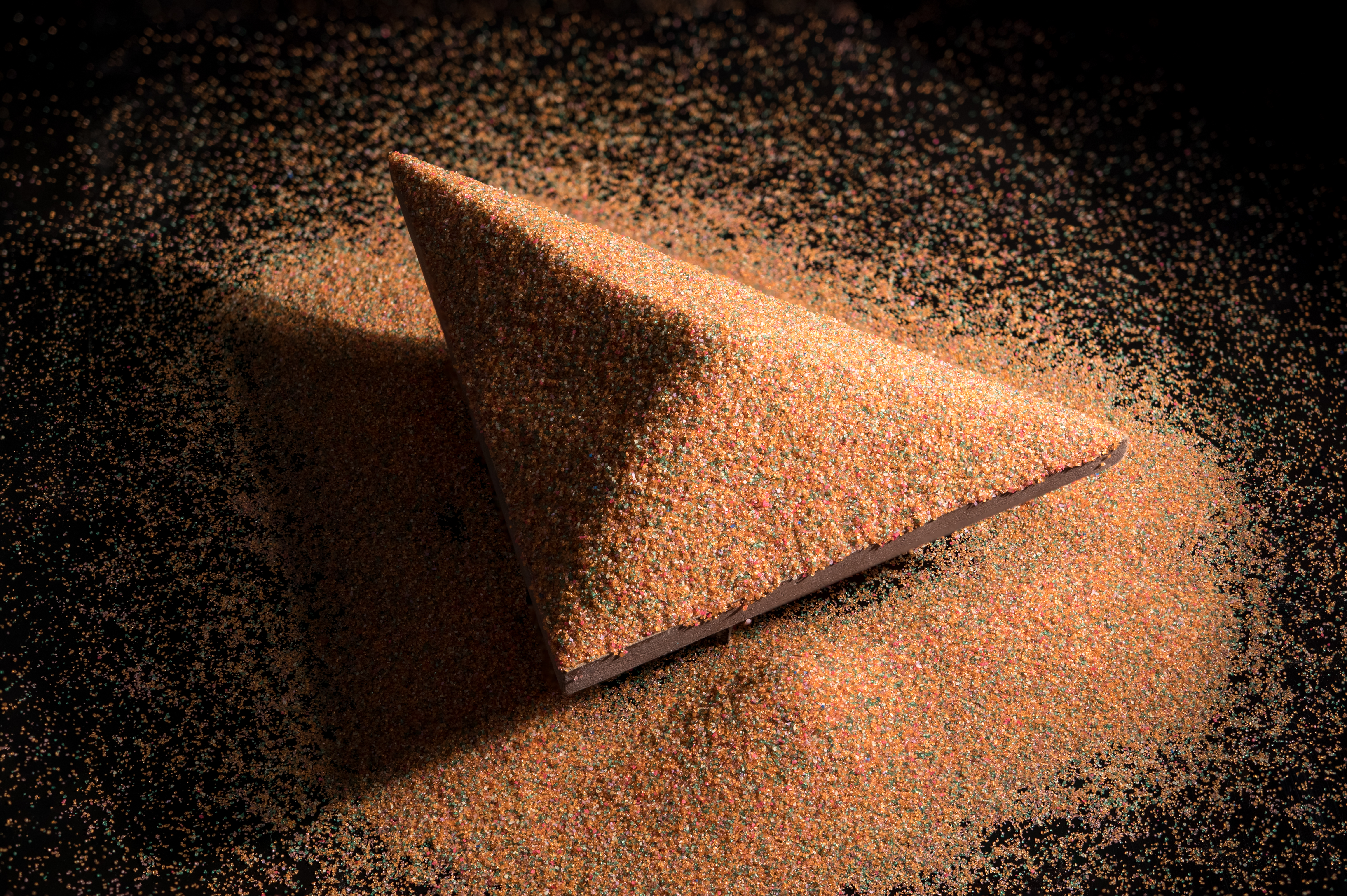SANDPILES
When we pour sand over the plate until any further addition causes landslides, we are left with a mountain with a constant slope. This slope is the maximum that that sand supports.
What shape do you think the mountain takes when the plate is a disk? Or when is a square? And a rectangle? Two of these plates are in the next images!


The height of the mountain above a point on the plate indicates how far that point is from the edge. The highest point of the mountain, therefore, projects over the so-called geographic center, which is the furthest point from the border.
In the case of a triangle, this point is the incenter, which is the meeting of the bisectors (or the center of the inscribed circle), as you can see in the image to the side.
The ridge of the mountain projects over what is called the “skeleton” of the plate. This skeleton has applications, for example, in the area of Computer Vision.

Below are two videos that show the "sandpile" actually being formed on two slightly different plates. Try to think before watching the video on how you imagine it would look and see if the result was as expected!
